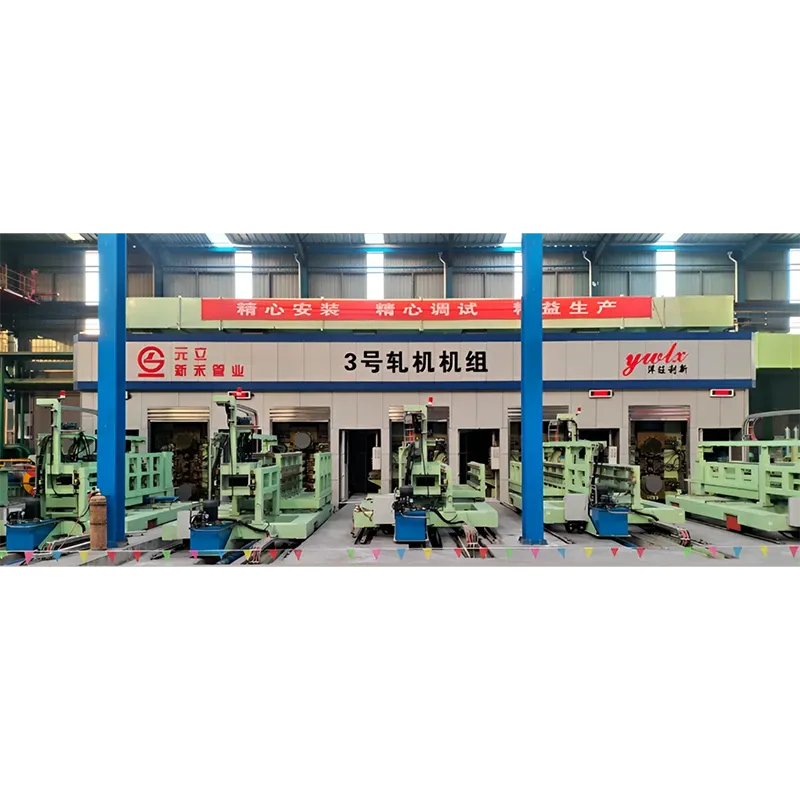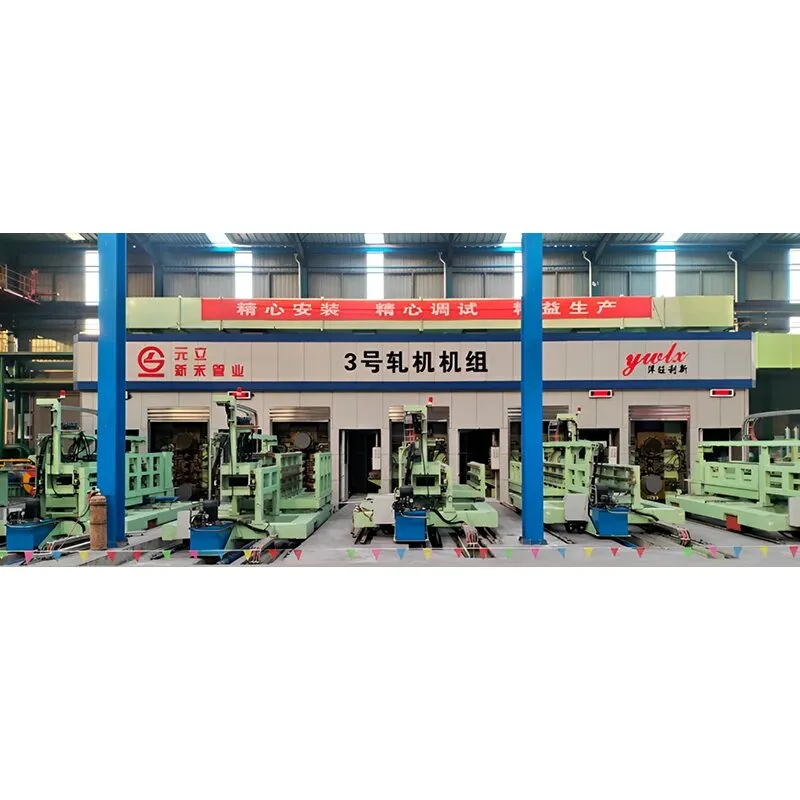
The Use of Tandem Cold Rolling for High-Volume, High-Precision Coil Production
The tandem cold mill is a critical component in modern steel production, enabling the high-volume manufacturing of precision steel coils with consistent thickness and superior surface quality. This process involves passing metal strips through multiple rolling stands in succession, each applying controlled pressure to reduce thickness and enhance mechanical properties. Unlike single-stand mills, the tandem rolling mill process ensures continuous deformation, improving efficiency and product uniformity.

The Role of the Pickle Line in Tandem Cold Mill Operations
Before steel coils enter the tandem cold mill, they must undergo pre-treatment to remove surface oxides and scale. This is where the pickle line tandem cold mill integration becomes essential. The pickling line and tandem cold mill work in tandem (no pun intended) to prepare the steel for cold reduction.
The pickling line uses hydrochloric or sulfuric acid to cleanse hot-rolled coils, ensuring a smooth, oxide-free surface. This step is crucial because any residual scale could lead to defects during cold rolling. Once pickled, the steel is fed directly into the tandem mill rolling stands, where it undergoes progressive thickness reduction.
Modern systems often combine the pickle line and tandem cold mill into a single continuous line, minimizing handling and improving production speed. This seamless transition between pickling and rolling enhances efficiency, making it ideal for high-volume manufacturing.
The Tandem Cold Mill Process: Precision and Efficiency
The tandem cold mill process consists of multiple rolling stands arranged in series, each contributing to incremental thickness reduction. A typical setup includes four to seven stands, with each stand applying precise rolling forces to achieve the desired gauge.
Entry Section: The pickled coil is fed into the first stand, where initial thickness reduction occurs.
Intermediate Stands: Subsequent stands apply further reductions while maintaining strip tension to prevent buckling or stretching.
Finishing Stands: The final stand ensures the exact thickness and surface finish required for the end product.
One of the key advantages of the tandem rolling mill process is its ability to maintain tight tolerances—often within microns—across the entire coil length. Advanced automation systems monitor roll force, tension, and speed in real time, adjusting parameters dynamically to ensure uniformity.
Advantages of Tandem Rolling Mills in High-Volume Production
The tandem cold mill is designed for mass production, offering several benefits over traditional single-stand rolling:
Higher Throughput: Continuous processing eliminates the need for intermediate recoiling, significantly increasing production rates.
Superior Flatness and Surface Quality: Multiple stands allow for gradual deformation, reducing stress and improving material properties.
Energy Efficiency: Modern tandem mills incorporate regenerative braking and optimized power distribution, lowering energy consumption.
Flexibility in Product Grades: The same mill can process various steel grades, from low-carbon to high-strength alloys, by adjusting rolling parameters.
These advantages make tandem cold rolling indispensable for automotive, appliance, and construction industries, where high-strength, precision-grade steel is in constant demand.
Tandem Rolling Mills Integration of Automation and Smart Technologies
Recent advancements in tandem mill rolling have introduced AI-driven control systems and predictive maintenance tools. Sensors embedded along the mill track strip thickness, tension, and temperature, feeding data to centralized control units. Machine learning algorithms optimize rolling schedules, reducing material waste and downtime.
Additionally, digital twin technology allows operators to simulate the tandem cold mill process before actual production, identifying potential issues and refining parameters for optimal performance.
The tandem cold mill remains a cornerstone of high-volume, high-precision steel production. Its integration with pickle lines, continuous processing capabilities, and advancements in automation ensure its dominance in the metals industry. As demand for ultra-thin, high-strength coils grows, further innovations in tandem rolling mill technology will continue to drive efficiency and quality to new heights.
By leveraging the full potential of the tandem cold mill process, manufacturers can meet the stringent requirements of modern applications while maintaining cost-effectiveness and sustainability. The future of coil production lies in smarter, faster, and more precise tandem rolling mills.
-
YWLX’s 1450mm Six-Hi Reversing Mill Goes Live in BangladeshNewsNov.24,2025
-
Adjusting Roll Gap in 6Hi Reversing Cold Rolling Mill for Thin StripNewsNov.13,2025
-
Quality Control Standards for Automatic Gauge Control in Strip RollingNewsNov.13,2025
-
Effect of Skin Pass Rolling on Metal DuctilityNewsNov.13,2025
-
Key Components of a Modern TempermillNewsNov.13,2025
-
Common Wear Patterns of Work Roll in Tandem Cold Mill OperationsNewsNov.13,2025
-
Revolutionary Skin Pass Rolling Technology for Enhanced Steel QualityNewsNov.04,2025

The Use of Tandem Cold Rolling for High-Volume, High-Precision Coil Production
The industrial demand for high-quality, precision-engineered metal coils has led to the widespread adoption of tandem cold rolling mills in steel and aluminum production. These mills are designed to process metal strips through multiple rolling stands in a continuous sequence, ensuring uniform thickness, superior surface finish, and enhanced mechanical properties. Unlike single-stand rolling mills, tandem cold metal rolling mill control systems enable synchronized operations across several stands, allowing for high-volume production with tight tolerances.
The tandem cold mill is particularly crucial in industries requiring ultra-thin, high-strength metal sheets, such as automotive manufacturing, aerospace, and consumer electronics. By leveraging advanced automation and real-time monitoring, continuous rolling mills achieve consistent product quality while minimizing material waste.

The Mechanics of a Tandem Cold Rolling Mill
A tandem cold rolling mill consists of multiple rolling stands arranged in series, each applying incremental reductions to the metal strip as it passes through. The process begins with the uncoiling of a hot-rolled strip, which is then fed into the first stand. As the metal progresses through subsequent stands, precise rolling forces are applied to achieve the desired thickness and surface characteristics.
One of the key features of a tandem cold metal rolling mill control system is its ability to maintain uniform tension across the strip. Since excessive tension can lead to strip breakage, while insufficient tension causes uneven thickness, modern mills employ closed-loop feedback mechanisms to adjust rolling speeds dynamically. Hydraulic gap control (HGC) systems further enhance precision by continuously adjusting roll gaps based on real-time thickness measurements.
In continuous rolling mills, lubrication and cooling play a critical role in preventing thermal deformation of the rolls. Emulsion systems deliver a controlled mixture of oil and water to reduce friction and dissipate heat, ensuring consistent rolling performance. The combination of these technologies allows tandem rolling mills to produce coils with thickness variations as low as ±1 micron, meeting the stringent requirements of high-end applications.
Advantages of Tandem Cold Rolling Over Conventional Methods
The transition from single-stand rolling to tandem cold mill systems has revolutionized metal coil production by offering several key advantages. First, the continuous nature of tandem cold rolling mills significantly increases throughput, making them ideal for high-volume manufacturing. Unlike batch processing, where each coil must be handled individually, continuous rolling mills allow for uninterrupted production, reducing downtime and labor costs.
Another major benefit is the superior metallurgical properties achieved through controlled cold working. As the metal strip undergoes sequential deformation in a tandem rolling mill, its grain structure is refined, resulting in improved strength and ductility. This makes cold-rolled coils particularly suitable for applications requiring high formability, such as automotive body panels and beverage cans.
Additionally, tandem cold metal rolling mill control systems enhance product consistency by minimizing deviations in thickness and flatness. Advanced sensors and automation algorithms continuously monitor strip dimensions, making real-time adjustments to ensure uniformity. This level of precision is unattainable with traditional rolling methods, where manual interventions often lead to variability.
Automation and Control in Modern Tandem Rolling Mills
The efficiency of a tandem cold mill heavily relies on sophisticated control systems that integrate mechanical, hydraulic, and electrical components. Modern tandem cold metal rolling mill control architectures utilize programmable logic controllers (PLCs) and human-machine interfaces (HMIs) to oversee the entire rolling process. These systems collect data from load cells, laser thickness gauges, and flatness sensors to optimize rolling parameters dynamically.
One of the most critical aspects of continuous rolling mills is tension control. Since the strip moves at high speeds (often exceeding 1,500 meters per minute), even minor fluctuations in tension can cause defects. To address this, modern mills employ automatic gauge control (AGC) systems that adjust roll forces instantaneously based on feedback from X-ray or gamma-ray thickness sensors.
Another breakthrough in tandem rolling mill technology is the use of artificial intelligence (AI) for predictive maintenance. By analyzing vibration patterns, temperature trends, and power consumption data, AI-driven systems can forecast potential equipment failures before they occur. This proactive approach minimizes unplanned downtime and extends the lifespan of rolling mill components.
Applications of Tandem Cold Rolled Coils in Industry
The precision and consistency offered by tandem cold rolling mills make them indispensable in several high-tech industries. In the automotive sector, cold-rolled steel coils are used to manufacture lightweight yet durable body panels, chassis components, and fuel tanks. The superior surface finish achieved through tandem cold mill processing also reduces the need for additional polishing or coating, lowering production costs.
The electronics industry benefits from ultra-thin cold-rolled strips used in smartphone casings, battery enclosures, and flexible printed circuits. Since these applications demand extremely tight thickness tolerances, continuous rolling mills with advanced control systems are the preferred choice for manufacturers.
Additionally, the packaging industry relies on cold-rolled aluminum coils for beverage cans, food containers, and foil products. The high formability and corrosion resistance of these materials make them ideal for preserving product integrity while maintaining aesthetic appeal.
The tandem cold rolling mill has become a cornerstone of modern metal manufacturing, enabling high-volume production of precision-engineered coils with unmatched consistency. Through advanced tandem cold metal rolling mill control systems, industries can achieve superior thickness accuracy, surface finish, and mechanical properties. The shift toward automation, AI-driven maintenance, and sustainable practices ensures that continuous rolling mills will remain at the forefront of metal processing technology.
As demand for high-performance metal coils grows, tandem rolling mills will continue to evolve, incorporating digitalization and eco-friendly innovations to meet the needs of tomorrow’s industries. Whether in automotive, electronics, or packaging, the role of tandem cold mill technology in shaping the future of manufacturing cannot be overstated.
-
YWLX’s 1450mm Six-Hi Reversing Mill Goes Live in BangladeshNewsNov.24,2025
-
Adjusting Roll Gap in 6Hi Reversing Cold Rolling Mill for Thin StripNewsNov.13,2025
-
Quality Control Standards for Automatic Gauge Control in Strip RollingNewsNov.13,2025
-
Effect of Skin Pass Rolling on Metal DuctilityNewsNov.13,2025
-
Key Components of a Modern TempermillNewsNov.13,2025
-
Common Wear Patterns of Work Roll in Tandem Cold Mill OperationsNewsNov.13,2025
-
Revolutionary Skin Pass Rolling Technology for Enhanced Steel QualityNewsNov.04,2025










